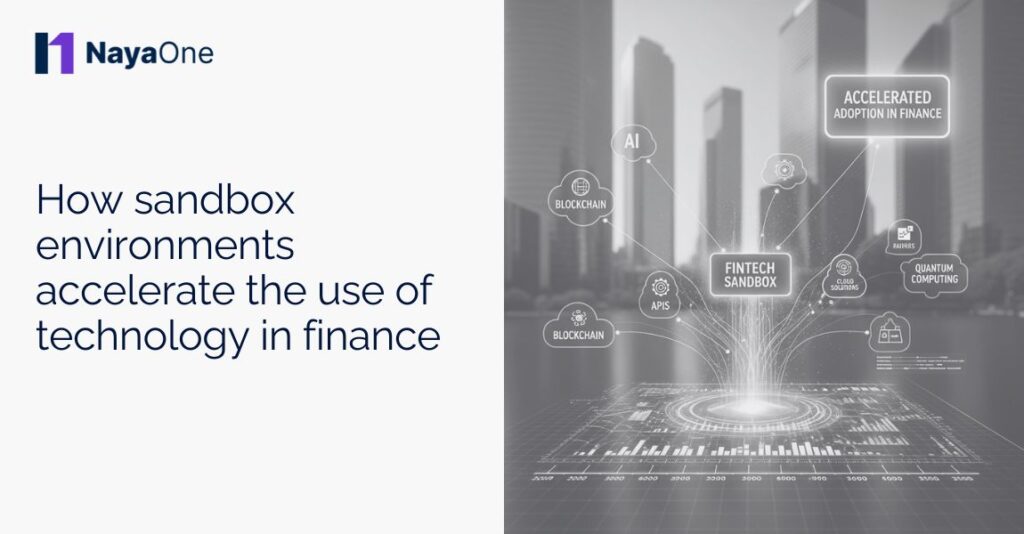The financial industry has always been a playground for numbers, rules, and innovation. But with digital platforms taking centre stage, the way financial products are built, tested, and delivered has shifted completely. Enter the sandbox environment. Think of it as a virtual playground for fintechs, banks, and developers to try out new ideas without worrying about breaking the rules or causing chaos in the real world.
Sandbox environments have quickly become one of the most exciting ways to support the use of technology in finance. They provide a safe place where organisations can explore new tools, refine digital products, and work alongside regulators to make sure everything runs smoothly. The best part? It allows the industry to embrace innovation without the usual risks of trial and error. Instead of slowing innovation down, sandboxes make it possible to test bold ideas faster, building momentum for lasting change in financial services.
What are sandbox environments, and why do they matter?
Imagine you’re learning to ride a bike. You probably used training wheels before pedalling off on your own. That’s basically what a sandbox environment does for financial innovation. It creates a secure setting where new products and services can be tested before being released into the big, wide world of finance.
Regulators love them because they can monitor activity in real time and provide feedback before a product is launched. Fintech startups love them because they offer a chance to prove that their ideas work without running into massive compliance headaches. Banks love them because they can explore fresh partnerships and stay relevant in a fast-changing market.
For example, the UK’s Financial Conduct Authority was one of the first regulators to create a formal sandbox. It gave startups the chance to test new financial apps with real users, under supervision, before full launch. This kind of initiative not only boosts trust but also speeds up innovation.
In short, sandbox environments matter because they bridge the gap between creativity and regulation. They ensure that innovation can thrive without putting customers or financial systems at risk. Without them, many promising products would remain stuck in the idea phase or take years to reach consumers.
How do sandbox environments reduce risk in financial innovation?
Testing something new in finance isn’t as simple as pressing “go” and hoping for the best. A mistake could mean lost data, financial losses, or breaches of regulatory rules. Sandboxes solve this problem by creating a safe copy of the real environment.
For example, a fintech app that wants to connect to a bank’s system can first test its APIs in a sandbox to see how the data flows. If there’s a problem, it won’t disrupt real transactions. This approach dramatically lowers the chances of failures when the product is launched in the market.
73% of fintech startups fail within their first three years due to preventable regulatory compliance issues. However, startups that engage in regulatory preparation during the pre-seed stage experience a 64% increase in survival rates. Sandbox testing also helps with compliance. Instead of waiting until the last minute to discover that a product doesn’t meet regulations, companies can get early guidance from regulators. This reduces delays and prevents costly rework later. By de-risking innovation, sandboxes make the use of technology in finance both safer and smarter.
Beyond compliance, sandboxes also give companies valuable feedback from real users. Some sandboxes allow limited live testing with small groups of consumers, under strict controls. This means developers can see how people actually interact with their products, making improvements before the full rollout. Risk isn’t just about regulation; it’s also about customer adoption, and sandboxes reduce both kinds.
In what ways do sandboxes speed up collaboration between fintechs and financial institutions?
Collaboration has always been tricky in finance. Banks often move slowly, weighed down by legacy systems and strict compliance requirements. Fintechs, on the other hand, thrive on speed and experimentation. Sandboxes provide common ground where both can meet, test ideas, and build new services together, supporting the use of technology in finance along the way.
Think of it like a hackathon, but with guardrails. Banks can open up their systems in a controlled way, and fintechs can plug in their solutions without the fear of causing disruption. This creates a space for partnerships that might otherwise take years to develop.
Some of the best innovations in finance come from this kind of collaboration. Whether it’s digital wallets, smarter payment systems, or tools for sustainable investing, sandboxes accelerate the process of moving ideas from whiteboards to real customer solutions. By encouraging teamwork, they bring together the best of both worlds: the stability of institutions and the creativity of startups.
This collaborative energy also helps smaller players gain credibility. A startup that proves its product works in a sandbox alongside a bank has a much better chance of securing funding or partnerships later. For the banks, it’s a low-risk way to stay ahead of trends and experiment with ideas they might not develop on their own. Everyone wins.
How do sandboxes shape the future use of technology in finance?
It’s clear that sandbox environments are not just a passing trend. They’re shaping how technology will be used in financial services for years to come. From open banking to embedded finance, the sandbox is where many of these big shifts first take shape.
Open banking, for instance, relies heavily on secure API integrations. Sandboxes give developers the perfect place to test these connections and ensure customer data is protected. Similarly, with sustainable finance gaining ground, sandboxes let innovators experiment with tools that help investors track environmental and social impacts.
Even regulators benefit, as sandboxes give them valuable insights into how new technologies work in practice. Instead of reacting to innovations after they hit the market, they can engage early and help shape solutions that meet both customer needs and regulatory requirements.
Looking ahead, the influence of sandbox environments will only grow. As finance becomes more digital and more global, cross-border testing in sandboxes could help align different markets and reduce friction. This would not only expand opportunities for fintechs but also give customers access to more seamless and consistent financial services.
All of this shows how sandbox environments will continue to drive the use of technology in finance, making it more collaborative, transparent, and future-ready.
Could sandbox environments be the key to the next wave of financial innovation?
The financial industry has never been short on ideas. The challenge has always been how to bring those ideas to life safely and effectively. Sandbox environments offer a powerful answer. They combine safety nets with opportunities for bold experimentation, letting banks and fintechs test, learn, and grow together.
By reducing risks, encouraging collaboration, and shaping future trends, sandboxes are proving to be one of the most valuable tools for driving the use of technology in finance. Without them, innovation would move more slowly, partnerships would be harder to form, and regulators would constantly be playing catch-up.
So, could they be the launchpad for the next wave of financial technology? All signs point to yes. With sandbox environments, the finance industry has a tool that balances creativity with safety, and ambition with responsibility. That balance is exactly what makes them such a game-changer.





